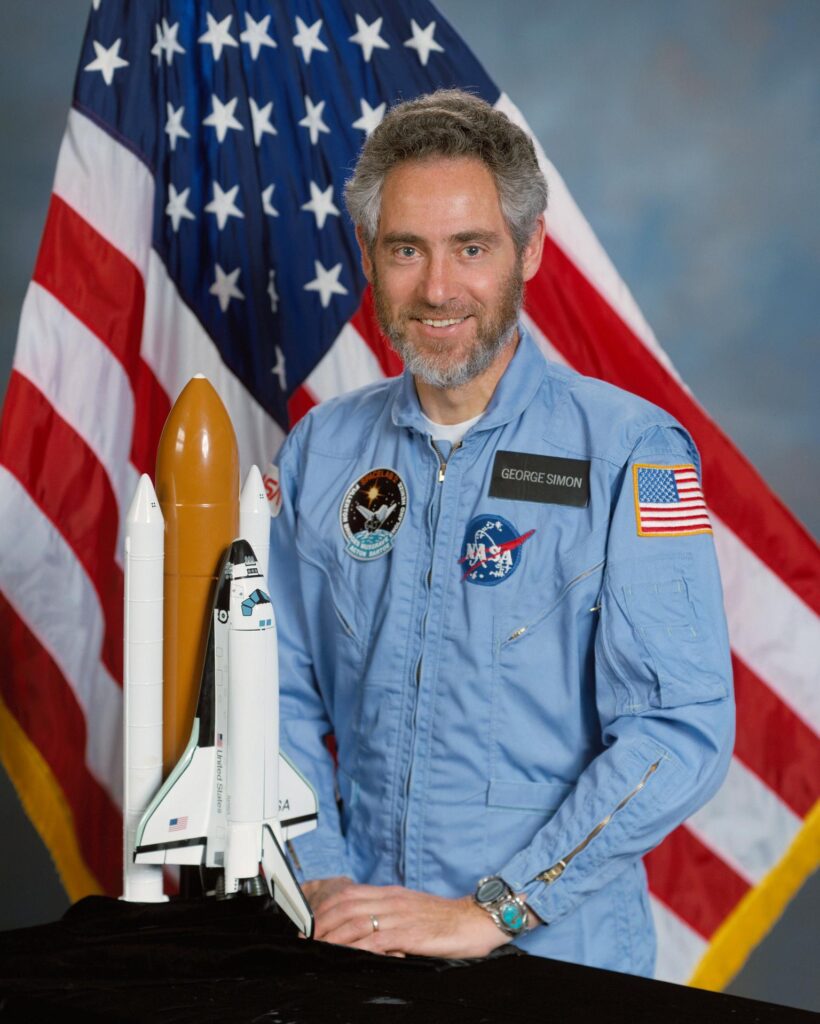George W. Simon was born on April 22, 1934, in Frankfurt am Main, Germany. In 1939 his family fled Germany due to Hitler’s persecution of the Jews but only after George’s father had been released from a Nazi concentration camp. After a year in England, they came to America, where George became a naturalized U.S. citizen. After graduating high school in Iowa, he received a Bachelor of Arts degree in Physics and Mathematics from Grinnell College in Grinnell, Iowa in 1955. He went on to earn Master of Science and Ph.D. degrees in Physics, both from the California Institute of Technology (Caltech) in 1961 and 1963, respectively. He also holds an MBA from the University of Utah (1976).
An ROTC distinguished graduate at Grinnell College, from 1956 to 1958 George Simon was a lieutenant in the U.S. Air Force at Wright-Patterson Air Force Base, Ohio, serving as a physicist and nuclear research officer. From 1958 to 1961, he was a member of the technical staff at Hughes Research Laboratories.
From 1961 to 1963, while working for TRW Space Technology Laboratories, Simon conducted research at Mt. Wilson Observatory in southern California, together with Robert Leighton and Robert Noyes that led to the birth of the science of helioseismology, the study of solar quakes. George Simon joined the staff at the Air Force Geophysics Laboratory at the Sacramento Peak Observatory (part of the National Solar Observatory) in Sunspot, New Mexico in 1963, the beginning of a distinguished career in solar physics, with a specialization in solar magnetoconvection.
Dr. Simon was a U.S. Air Force Research scientist at the Air Force Geophysics Laboratory on August 9, 1978, when he was selected by NASA to be an astronaut. He was as a backup Space Shuttle Payload Specialist for the Spacelab 2 mission (STS-51F), flown from July 29 to August 6, 1985. Dr. Simon had devised one of the experiments performed during the mission, the Solar Optical Universe Polarimeter (SOUP). This observed the strength, structure, and evolution of magnetic fields in the sun’s photosphere to determine the relationship between these magnetic elements and other solar features. Simon also served as the communicator to the astronaut crew during that mission, ensuring the success of the SOUP experiment. He was scheduled to fly aboard Sunlab 1, the follow-up mission to Spacelab 2, however, that mission was postponed indefinitely.
Dr. Simon left the astronaut corps on August 6, 1985. In 1993, he helped write an Air Force report on the Mechanisms of Solar Variability (MSV) Program, which aims toward understanding physical causes of variations in the radiative, magnetic, and particle emissions from the Sun. The author of 50 scientific papers, George W. Simon has been named a Fellow of the U.S. Air Force Phillips Laboratory, the Laboratory’s highest award for scientific and engineering achievements.

